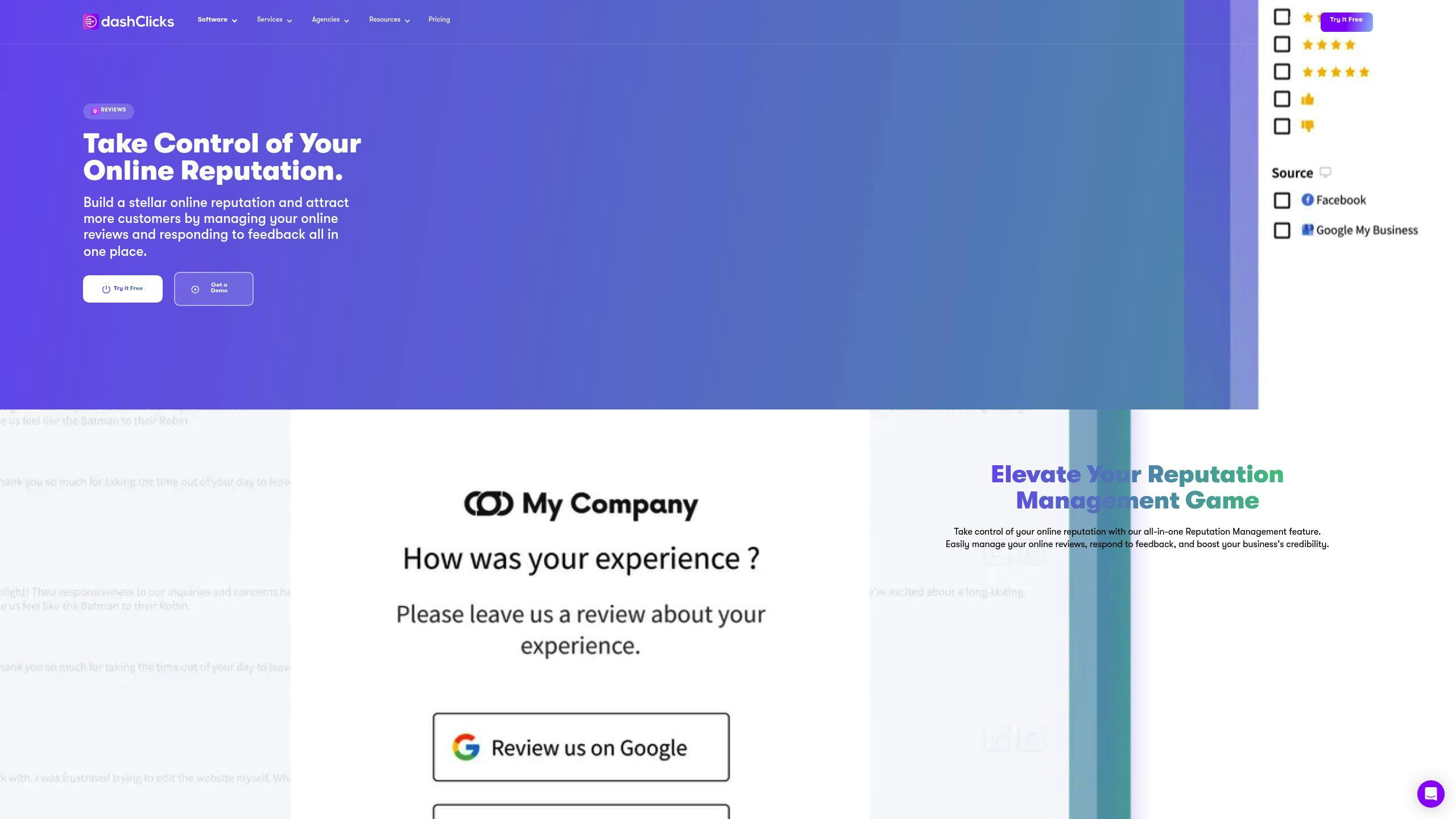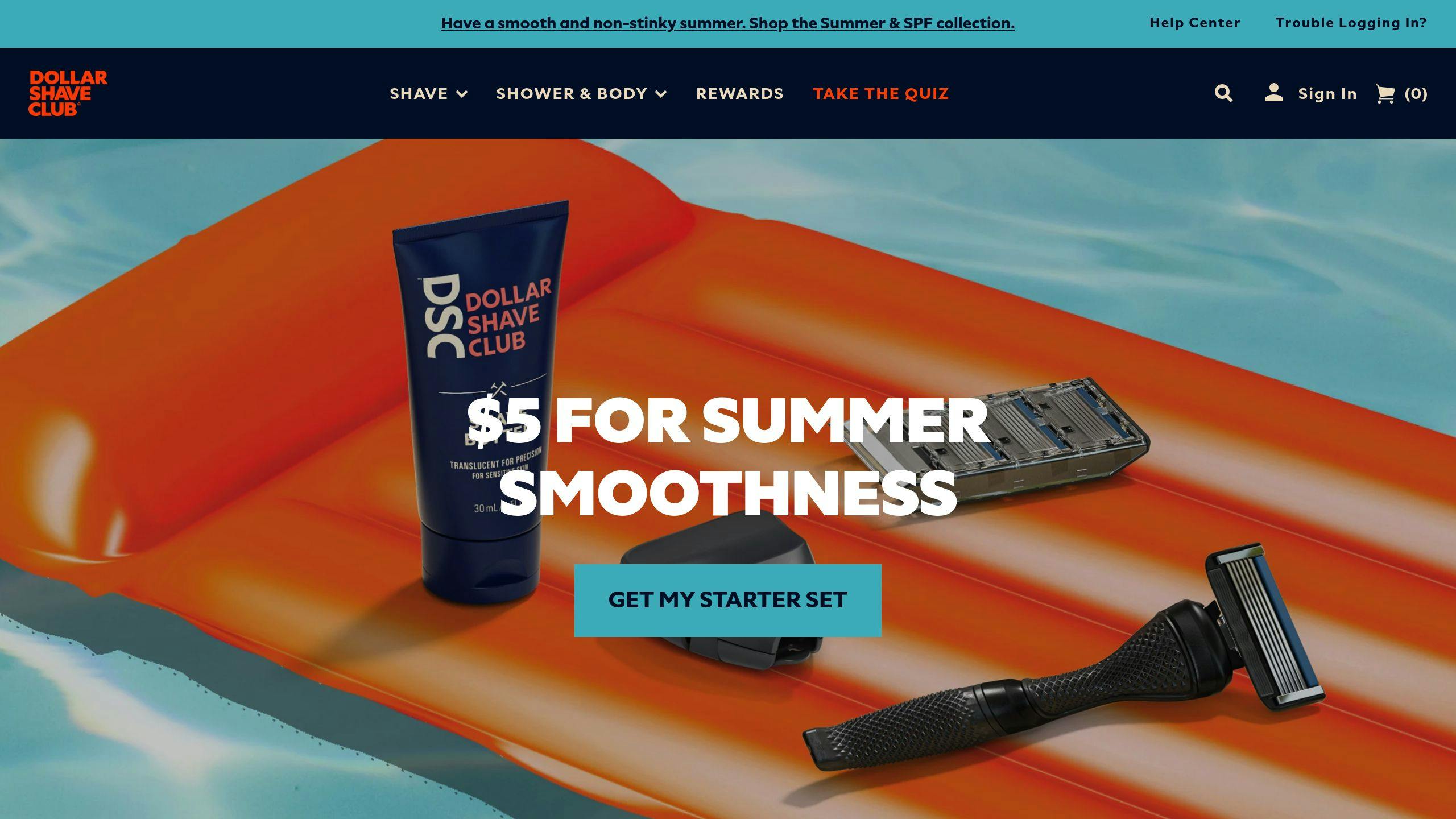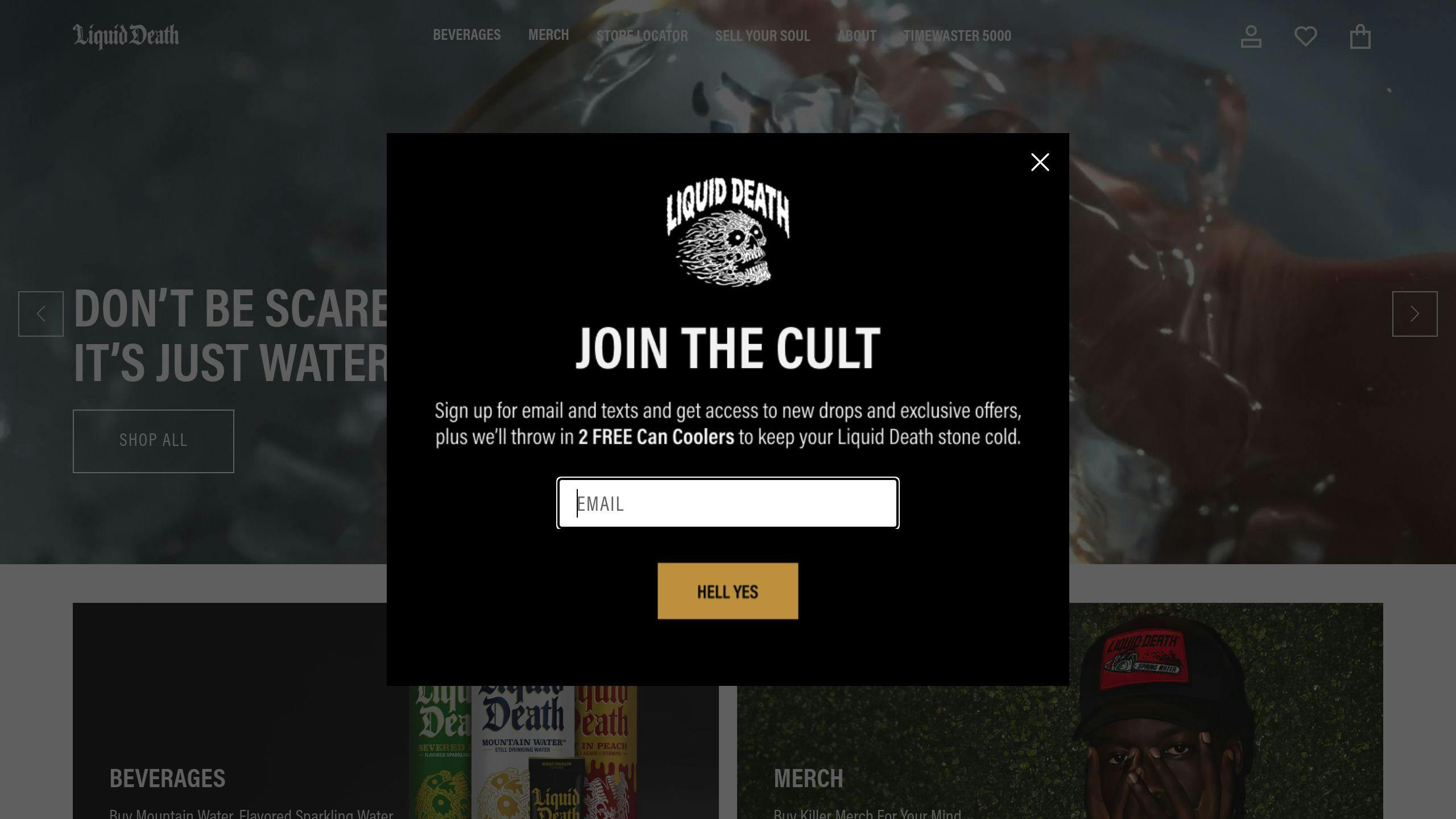Guerrilla marketing helps small businesses punch above their weight without breaking the bank. Here's how:
- It's cheap: Uses creativity, not cash
- It's memorable: Weird stuff sticks in people's minds
- It levels the playing field: Small fish can make big splashes
Key tactics for SMBs:
- Go grassroots: Show off at local events
- Use word-of-mouth: Get employees to spread the word
- Start a referral program: Reward customers for bringing friends
- Get local: Set up at farmers markets or community gatherings
- Team up: Partner with non-competing businesses
- Boost online presence: Set up free Google My Business
| Tactic | Cost | Impact |
|---|---|---|
| Flash mob | Low | High social reach |
| Sidewalk art | Very low | More foot traffic |
| Viral content | Low-Medium | Potential for massive reach |
| Social media challenge | Free | Could go viral |
Remember: Be creative, know your audience, and stay legal. With smart guerrilla marketing, small businesses can compete with the big guys without spending big bucks.
Guerrilla marketing basics for small businesses
Guerrilla marketing is about being scrappy and resourceful. It's how small businesses can compete with big brands without spending a fortune. Here's what you need to know:
Main ideas
- It's all about low-cost, high-impact strategies
- Use creativity instead of cash
- Know your audience and target them smartly
- Team up with other businesses
- Use social media and online platforms to spread your message
Competing with big brands
Small businesses can punch above their weight with these guerrilla tactics:
1. Go grassroots
Think Apple's early days. Jobs and Wozniak showed off their first computer at a local club. No big budget, just grassroots buzz.
2. Use word-of-mouth
Slack grew by having employees tell their friends about the app. Simple, but effective.
3. Start a referral program
Dropbox gave users free storage for inviting friends. Result? Massive growth on the cheap.
4. Get local
Show up at farmers markets or local events. It's an easy way to get your name out there and make connections.
5. Team up with other businesses
Partner with non-competitors. A home renovation company could work with local contractors to share clients.
6. Boost your online presence
Set up a Google My Business account. It's free and can drive a ton of traffic your way.
Planning a guerrilla marketing campaign
To nail your guerrilla marketing campaign, you need a solid plan. Here's how:
Finding your audience
Know your target customers inside out:
- Where do they hang out?
- What do they care about?
- How do they communicate?
Let's say you're a coffee shop targeting young professionals. You might focus on areas near co-working spaces or popular lunch spots.
Setting goals
Be crystal clear about what you want. Use SMART goals:
- Specific
- Measurable
- Attainable
- Relevant
- Time-bound
"Increase foot traffic by 20% within the next month" beats "Get more customers" any day.
Managing resources
Make every resource count:
| Resource | How to use it |
|---|---|
| Time | Plan smart to avoid wasted effort |
| Money | Go for low-cost, high-impact ideas |
| People | Rope in friends and family |
Guerrilla marketing is all about being clever with what you've got. As Jay Conrad Levinson, who coined the term, said:
"Guerrilla marketing is achieving conventional goals, such as profits and joy, with unconventional methods, such as investing energy instead of money."
Here's how it all comes together:
A small bookstore faced tough competition from a big chain nearby. They:
1. Found their audience: Local book clubs and schools
2. Set a goal: Boost sales by 15% in 3 months
3. Managed resources: Used free social media and teamed up with local cafes
Their campaign? They hid book vouchers around town and dropped clues on social media. The result? They smashed their 15% sales increase goal in just 2 months.
Guerrilla marketing methods for small businesses
Want to make a splash without draining your bank account? Here's how small businesses can use guerrilla marketing to pack a punch:
In-person marketing ideas
1. Flash mobs
Get a group together, slap on your logo, and perform in public. It's attention-grabbing and could go viral.
2. Sidewalk art
Grab some chalk and get creative near your store. It's dirt cheap and pulls people in.
3. Treasure hunts
Hide prizes around town and drop clues online. It's a fun way to get people moving and talking.
| Method | Cost | Impact |
|---|---|---|
| Flash mob | $-$$ | High social reach |
| Sidewalk art | $ | More foot traffic |
| Treasure hunt | $ | Community buzz |
Online guerrilla tactics
1. Viral content
Make stuff people want to share. Think Blendtec's "Will it Blend?" series.
2. Social media engagement
Leave smart, helpful comments on relevant posts. No hard selling - just build relationships.
3. Influencer partnerships
Team up with local influencers for genuine promotion.
"Guerrilla marketing is about achieving normal goals with abnormal methods. It's investing energy instead of cash." – Jay Conrad Levinson
Low-cost guerrilla marketing
Small businesses can make a big splash without emptying their wallets. Here's how:
Cheap but effective ideas
- Sidewalk art
Got chalk? Turn the pavement into your canvas. It's cheap and eye-catching. (Check local laws first!)
- Sticker bombing
Print custom stickers for as little as $15. Stick 'em where it's allowed - lamp posts, bus stops, you name it.
- Social media challenges
Cook up a fun, shareable challenge tied to your brand. It's free and could go viral.
| Tactic | Cost | Reach |
|---|---|---|
| Sidewalk art | $5-$20 | Local foot traffic |
| Sticker bombing | $15-$50 | City-wide |
| Social media challenge | $0 | Potentially viral |
Team up with other businesses
Boost your reach without spending a dime:
- Cross-promotions
Partner with businesses that share your audience but aren't competitors. Think yoga studio + health food store.
- Joint events
Pool resources for a bigger bash. Brewery + food truck = street festival.
- Referral networks
Set up a customer referral system. It's free and builds community goodwill.
"Teaming up with a related business is a great way to introduce your product to a new audience. Host a networking event at a local brewery or throw a customer appreciation night with a referral partner."
sbb-itb-0fc0b25
Checking if your guerrilla marketing works
Measuring guerrilla marketing isn't easy, but it's key to know if it's working. Here's how:
What to measure
Focus on these:
- Website traffic spikes
- Social media buzz
- Sales or sign-ups increases
- Brand awareness changes
How to measure
1. Use specific tracking tools
Create custom URLs or QR codes. They'll help you link traffic and conversions directly to your guerrilla efforts.
2. Listen on social media
Use tools like Hootsuite or Mention to track online chatter about your brand.
3. Compare before and after
Look at your key metrics before and after the campaign:
| Metric | Before | After | Change |
|---|---|---|---|
| Daily website visitors | 500 | 750 | +50% |
| Social media mentions | 20/day | 100/day | +400% |
| Sign-ups | 10/day | 30/day | +200% |
4. Calculate ROI
Divide revenue by campaign costs. If you spent $1,000 and made $5,000 in new sales, your ROI is 400%.
5. Get creative offline
For physical campaigns, count foot traffic, collect business cards, or track coupon use.
The Fiji Water Girl at the 2019 Golden Globes saved the company an estimated $18 million in ad costs through exposure.
This shows how ONE clever tactic can have a huge impact. Most small businesses won't see such big results, but it shows what smart, low-cost marketing can do.
Combining guerrilla marketing with online reputation
Guerrilla marketing can supercharge your online reputation. Here's how small businesses can punch above their weight:
Get more online reviews
Try these guerrilla tactics:
- Sneak QR codes to review sites onto receipts or packaging
- Create an Instagram-worthy photo spot in your store
- Team up with local influencers for authentic reviews
Fun fact: 72% of consumers trust local businesses more after reading positive reviews. But don't cheat - the FTC frowns on paid reviews.
Leverage ReputationDash

ReputationDash helps you manage your online presence:
- Keep tabs on reviews across platforms
- Respond to feedback FAST
- Track your reputation score
| Metric | Before ReputationDash | After 3 Months |
|---|---|---|
| Average star rating | 3.7 | 4.2 |
| Review response time | 48 hours | 4 hours |
| New reviews per month | 15 | 45 |
"Millions of people come to Yelp every day looking for trusted reviews and information about the businesses in their area." - Emily Washcovick, small business expert at Yelp
Legal and ethical issues
Guerrilla marketing can be risky for small businesses. It's a chance to shine, but it can backfire. Here's how to stay legal and ethical:
Avoiding legal problems
Don't make these costly mistakes:
- Ask first: Get permission for public or private spaces. Microsoft learned this in 2002. They put butterfly stickers all over Manhattan without asking. Result? A $50 fine and angry people.
- Watch out for copyrights: Don't use others' work without permission. A cool campaign using a famous movie poster? Could end in a lawsuit.
- Think safety: Flash mobs are fun, but they might break laws or be dangerous. Check local rules and get permits.
| Pitfall | How to Avoid |
|---|---|
| Using space without permission | Get it in writing from owners |
| Copyright issues | Make your own stuff or pay for rights |
| Causing trouble | Check laws, get permits |
| Privacy problems | Ask before tracking people |
Staying ethical
Ethics isn't just about avoiding fines. It's about trust:
- Be real: Don't trick people. Honesty keeps customers coming back.
- Protect the vulnerable: Leave kids alone. Don't take advantage of people who don't know better.
- Respect privacy: Be clear about data collection. 75% of people want you to ask before tracking them.
- Think green: Don't hurt the environment or make unnecessary trash.
A clever campaign isn't worth ruining your reputation. Nima Haddadi, ex-DA of Los Angeles, says:
"Some of those stipulations could be that the image cannot be used for commercial purposes, or that you have to include an attribution link."
Remember: A smart campaign builds your brand. A shady one can destroy it.
Examples of successful small business guerrilla marketing
Small businesses can punch above their weight with smart, low-cost marketing. Here's how some did it:
Dollar Shave Club: Video gold

In 2012, Dollar Shave Club spent $4,500 on a funny video. It went viral. By 2015, they owned 48.6% of the online shaver market. Unilever bought them for $1 billion in 2016.
Airbnb: Email magic

Airbnb started with air mattresses in 2008. They grew using targeted emails based on user searches. By 2023, they were worth $73.34 billion.
Liquid Death: Water with a twist

This canned water brand got weird. They even made hot-fudge-sundae flavored sparkling water with Van Leeuwen Ice Cream. People talked. People bought.
What worked?
| Tactic | Example | Why it worked |
|---|---|---|
| Viral content | Dollar Shave Club video | Funny, shareable, cheap |
| Smart emails | Airbnb recommendations | Personal, useful |
| Odd partnerships | Liquid Death x Van Leeuwen | Attention-grabbing |
Small businesses can learn from this:
1. Make stuff people want to share
Dollar Shave Club's video spread like wildfire. Make content that's funny or useful.
2. Send emails people want to read
Airbnb grew with targeted emails. Segment your list. Send offers people care about.
3. Partner up in unexpected ways
Liquid Death's ice cream water was weird, but it worked. Find unusual partners that fit your brand.
4. Be you
Each company leaned into what made them different. What's your unique angle?
The takeaway? With creativity, small businesses can compete against the big guys without breaking the bank.
Wrap-up
Guerrilla marketing is a small business's secret weapon. It's not about outspending the competition - it's about outsmarting them.
Why it works:
- It's cheap. You're investing brainpower, not big bucks.
- It turns heads. Weird works.
- It levels the playing field. David can beat Goliath with the right slingshot.
The guerrilla marketing playbook:
1. Zig when others zag
Don't copy the big guys. Do what they're too scared (or too corporate) to try.
2. Know your tribe
Target like a sniper, not a shotgun. Hit your audience where they live, work, and play.
3. Stay on the right side of the law (and ethics)
Make waves, not enemies. Keep it legal and above board.
4. Measure, rinse, repeat
Track what works. Ditch what doesn't. Evolve or die.
| Tactic | Real-World Win | Why It Worked |
|---|---|---|
| Viral video | Dollar Shave Club's $4,500 masterpiece | Hilarious and shareable |
| Smart emails | Airbnb's personalized recommendations | Actually useful to customers |
| Weird partnerships | Liquid Death's "water ice cream" | So bizarre people HAD to look |
Small businesses CAN beat the big boys. It takes guts, brains, and a willingness to get weird. Start small, fail fast, and keep swinging. Your crazy idea might just be crazy enough to work.


